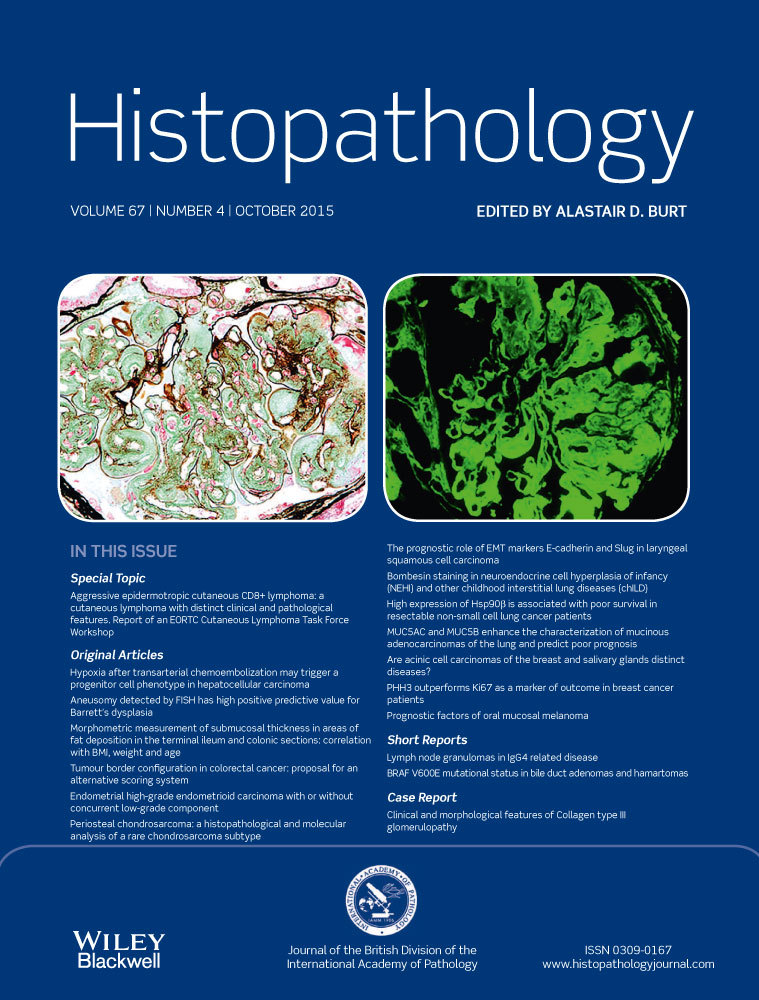Phosphohistone H3 outperforms Ki67 as a marker of outcome for breast cancer patients
Abstract
Aims
The proliferation marker Ki67 has been extensively investigated as a prognostic factor in breast cancer, but has not gained widespread clinical acceptance. Phosphohistone H3 is a new immunohistochemical marker for quantifying mitoses; however, there is limited information on its prognostic value in breast cancer. In this study, we performed a head-to-head comparison of Ki67 and phosphohistone H3 to establish the marker with the greatest prognostic value.
Methods and results
Tissue microarrays from 108 breast cancer patients were immunohistochemically stained for Ki67 and phosphohistone H3. Our results showed that phosphohistone H3 had a greater prognostic value than Ki67 in a multivariable model that adjusted for traditional prognostic variables in breast cancer. Phosphohistone H3 staining was a stronger predictor of survival at 5 years after diagnosis [hazard ratio (HR) 4.35, P < 10−5] than Ki67 (HR 2.44, P = 0.004), and better separated the risk of death in patients aged >45 years. Importantly, phosphohistone H3 consistently showed strong unequivocal staining, in contrast to the variable staining intensities associated with Ki67.
Conclusions
Our study suggests that phosphohistone H3 staining is a stronger and more robust prognostic indicator than Ki67 staining in breast cancer patients, and has the potential for use in routine diagnostic laboratories.




